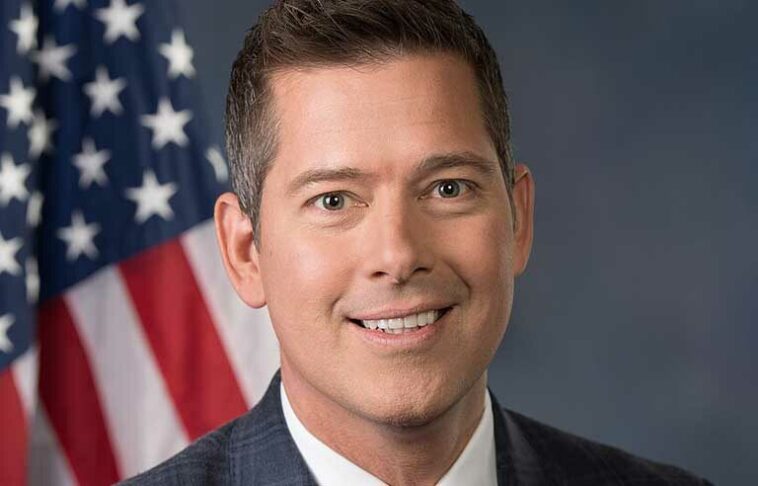Early morning commuters flooded into the A subway on January 7, 2025, undeterred by disparaging remarks from the federal transportation secretary, who shockingly labeled the subway system as a ‘disgrace.’ The Metropolitan Transportation Authority (MTA) and the New York Police Department (NYPD) found these comments puzzling, especially given the substantial decline in severe transit crimes over the past year, nearing a 30% decrease.
Joseph Gulotta, the leader of the NYPD’s Transit Bureau, acknowledged on Monday that despite a generally safe environment, there’s a prevailing negative perception about subway safety. Crime rates, including robberies, assaults, burglaries, and grand larcenies, have declined significantly due to the increased police presence in subway stations and trains.
Gulotta revealed to the MTA board during a meeting that the crime rate had diminished by nearly 28.2% over the last two months. He pointed out that this decrease represented 110 fewer victims than the same time frame in the previous year. According to Gulotta, these numbers affirm the success of their safety measures and paint a clear picture contrary to the controversial comments made by the federal transportation secretary, Sean Duffy.
Duffy stoked further flames over the past weekend with his comments implying that Governor Kathy Hochul had the resources and ability to ‘clean up the subways’ within just a day and a half. He suggested that she is purposely not doing so. This prompted a mixture of disappointment and confusion among several MTA board members.
One member felt disillusioned with Duffy’s statements, questioning their basis. Another MTA board member, himself bewildered, wondered about the source of Duffy’s numbers, given how significantly their reports differed.
Haeda Mihaltses, the chairperson of the MTA Transit Committee of New York City, emphasized the incongruity between their data and the transportation secretary’s assertions. Samuel Chu, another board member, echoed these sentiments, stating that New York has often been a convenient scapegoat for critics but maintained it is a city known for its resolve and perseverance despite diversity.
Andrew Albert, a fellow board member also chimed in, expressing his disappointment with Duffy’s comments. He considered them a direct insult to police officers, especially following a resurgence in police deployment inside the subway system this January, orchestrated through a collaborative effort by Hochul and Mayor Eric Adams.
Indeed, officers have been assigned to every subway train during the wee hours, a move financed by $154 million, split between state and city funds. Albert was firm in his conviction that the presence of these officers, undoubtedly improving riders’ sense of security, starkly contradicts Duffy’s critique.
The controversy doesn’t end here. Last week, Duffy threatened to withdraw federal funding for the MTA if they fail to demonstrate plans of improving subway safety and providing crime stats, most of which are already publicly accessible. Duffy emphasized the need for safety, cleanliness, and an appealing aesthetic for public transit during a tour of New Jersey sinkholes near Interstate 80.
Echoing his previous criticism, Duffy blamed Hochul for letting the subway system degrade, which he referred to using the derogatory term. This came amid ongoing struggles between the Transportation Authority, the largest of its kind in the country, and federal authorities, revolving around congestion pricing.
In the previous month, Duffy and his department faced a lawsuit by the MTA, following an attempt by Trump’s administration to suppress federal approval for the vehicle tolling system. This legislative measure, approved in 2019 and under Biden’s administration thereafter, earned the title of the first congestion-pricing project nationally, starting in early January.
This initiative is expected to accrue upwards of $15 billion for MTA’s capital plans stretching from 2020 to 2024. The five-year budget, exceeding $50 billion, is allocated for crucial station improvements, signal update, building extensions of the Second Avenue Subway through East Harlem, and other infrastructure enhancements.
However, Trump sought to honor a promise he made during his August campaign to terminate the vehicle tolling initiative, which was temporarily halted by Hochul earlier last year for a few months. The president even took to social media platforms in the past month to announce the death of congestion pricing, juxtaposing it with cryptic proclamations.
The federal Department of Transportation (DOT), on the other hand, decided to extend the deadline for the congestion-pricing shutdown by 30 days. The toll methodology below 60th Street in New York City, supported by Hochul and MTA, will remain implemented.
Officials announced on Monday that these tolls are on track to contribute around $500 million to the MTA by the end of 2024. The tolls have already raked in excess of $40.4 million of net income last month. A few additional benefits they noted include a 4% increase in bus speeds on routes within the congestion relief area, along with decreased travel times for paratransit journeys within Manhattan.
Jai Patel, MTA’s co-chief financial officer, praised the program’s ability to reduce traffic while also generating projected funds for necessary transit development projects. However, transportation advocates are concerned about the implications of Secretary Duffy’s threat to withdraw federal funding from the transit system. Lisa Daglian, the executive director of the Permanent Citizens Advisory Committee to the MTA, pleaded with Duffy to aid the system’s improvement rather than obstruct it.

